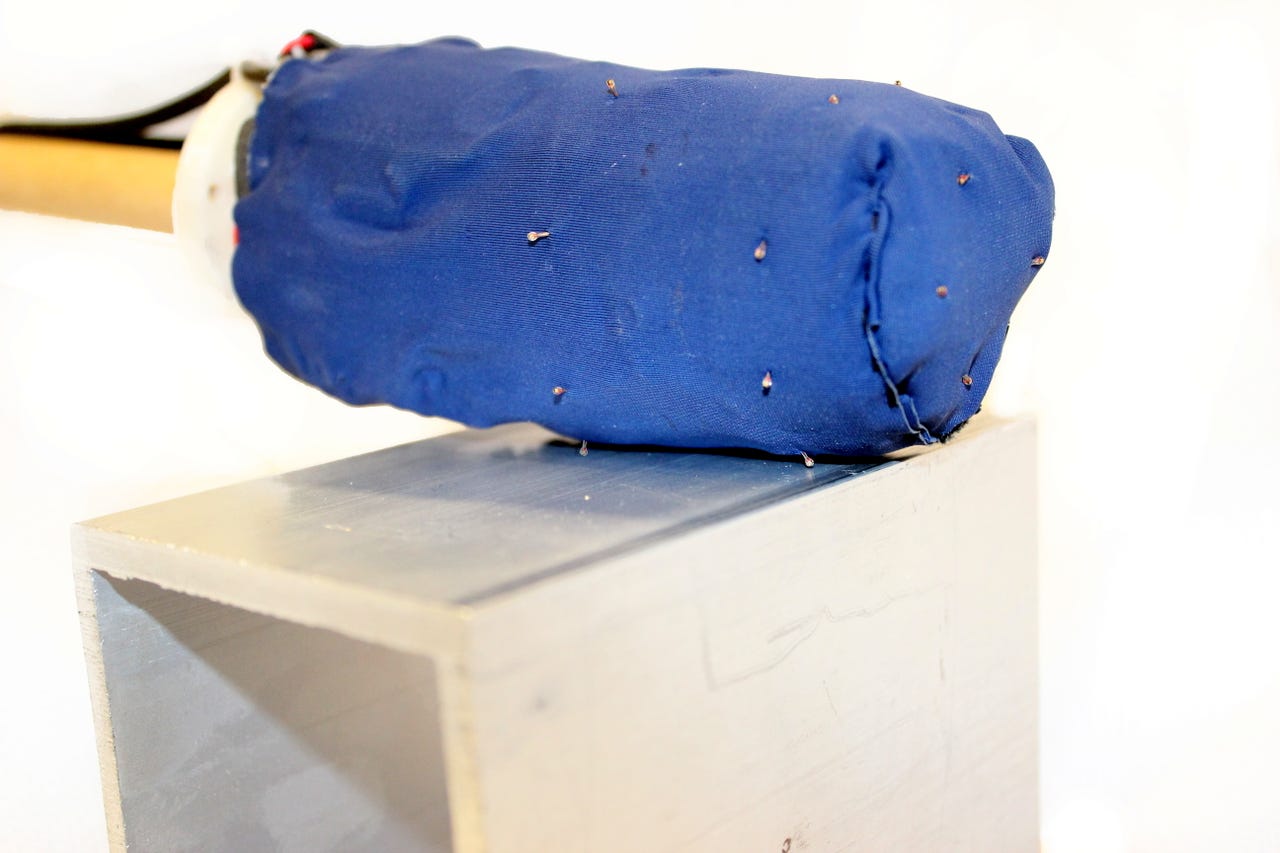Artificial skin improves home care robots


A fabric-based tactile sensing skin prototype covers a 3D-printed cylinder. (Image: Georgia Tech Healthcare Robotics Lab)
We're starting to invite robots into our homes, whether for entertainment, household chores, or as caregivers. In fact, the home care robotics market is expected to quadruple, reaching $5.9 billion by 2025. The problem is that while robots work well in structured manufacturing environments, our homes are cluttered and people are unpredictable. Before robots can truly be comfortable and effective in homes, they will need to get better at sensing their surroundings.
Robotics
To this end, researchers at Georgia Tech have created an artificial skin that gives robots the ability to identify different materials by lightly touching them. The fabric-based skin has both thermal sensors and force sensors. The combination enables the skin to tell the difference between metal and wood. The folks at IEEE Spectrum point out that this technique mimics the way that human skin uses thermal conductivity to identify different materials.
For example, if you touched two samples of metal and wood that were the same temperature, the metal would feel colder because it has high thermal conductivity, so it quickly absorbs your hand's heat. The warm artificial skin used similar thermal sensing to correctly distinguish pine (wood) from aluminum (metal).
This ability could help robots manipulate objects and understand their environment, which would make them safer and more useful in unstructured environments. In a robot's eyes, even the neatest, cleanest homes are messy and overwhelming. Then when you add people -- fragile, unpredictable humans -- to the mix, any basic task becomes even more challenging.
A company called SynTouch is developing a similar thermal sensor, but it only covers a robot's fingertip. The Georgia team, however, has provided evidence that robots are more capable when they are allowed to lightly touch things with their arms, not just their hands.
Georgia Tech researcher Charles C. Kemp, PhD tells ZDNet:
Any time a robot touches something with its arm, tactile sensing skin can help it respond more intelligently. For example, the robot might be able to tell whether its arm is touching a person's body or a wheelchair the person is sitting in. If the robot is touching the person, it might choose to be more gentle in its motions. Also, people might reach out to touch a robot's body to communicate with it. If the robot can tell that a person has touched its shoulder, it might give the person its attention, instead of carrying on with its work.
The team's work suggests that this type of sensing could help a robot better assist people by recognizing, for example, difference between a towel and a bathtub. Perhaps most importantly, the skin could help a robot determine when it has touched a person.
The research is still in progress, and the artificial skin prototype has not yet been tested on robots or with people. Certainly, additional research is needed and the design will be improved in the future. So far, though, the results of experiments demonstrate that the skin can distinguish between wood and metal in just a quarter of a second.